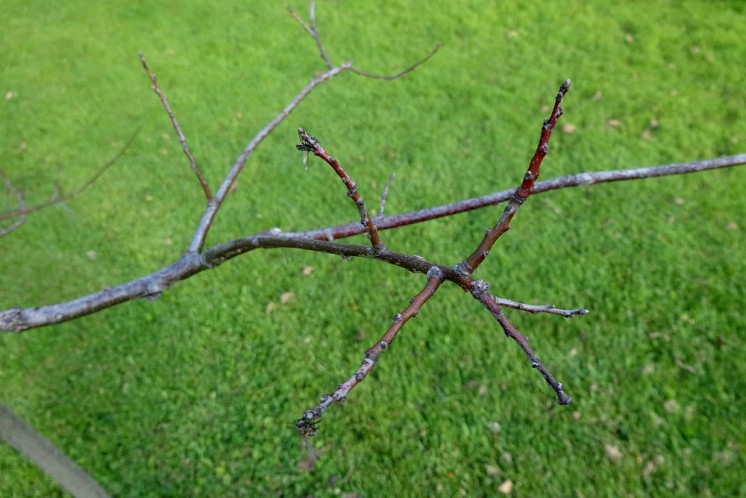A recent news release from the Minnesota Department of Natural Resources reports that “foresters are seeing many silver maples and some elms with stunted or no leaves and an abundance of seeds this spring. These trees are not dead and will rebound over the next couple of years.”
The image above is of a tree I planted last fall that hasn’t produced leaves this spring. I can’t remember what kind of tree it is, but I think it’s a northern pin oak. The DNR lists elms, maples, ashes and oaks as potential stunted bloomers.
Unless someone who sounds knowledgeable pops into the comments and tells me otherwise, I will presume my new tree will bounce back and I’ll give it the proper “care and patience” encouraged by the DNR. I will accept, however, anyone with smarts telling me to stop wasting my faith on a dead tree or pointing out that my tree identification skills are sub-par and I don’t have a northern pin oak.
Below are photos of the full tree. At left is a shot from September; at right is a shot from last night.
More from the DNR news release:
“Silver maples from Minnesota to Ohio are experiencing this phenomenon,” said Brian Schwingle, DNR forest health specialist. “Environmental stressors and natural cycles of large seed production are factors in this situation.”
The large production of seeds means less energy is available for leaf development, causing stunted and sparse patches of leaves. Such conditions happen periodically with elms, maples, ashes and oaks.
Watering trees during periods of drought is important. The best way to water an established tree is to slowly apply water once a week for four to eight hours in the tree’s dripline (area underneath the canopy). This can be done by moving around a hose that is trickling water under the tree’s canopy or laying drip tubing on the ground under the tree’s canopy.
Fertilizing stressed trees is not recommended.
